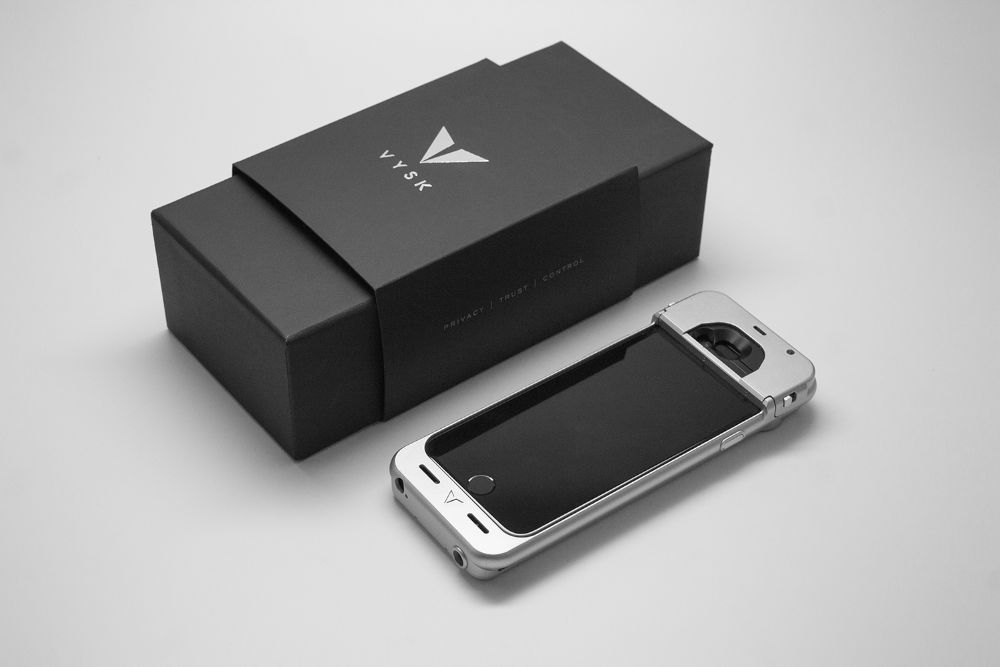Photo Gallery

|


|
QS1 Quantum Security Case (powered by TruE2E)



Additional Info
| Company | Vysk |
| Company size | 50 - 99 employees |
| Website | http://www.vysk.com |
NOMINATION HIGHLIGHTS
Smartphones are vulnerable to a vast array of targeted attacks. Using malware, spyware, spoofed apps, baseband processor attacks, and Man-in-the-Middle attacks, hackers can compromise the sensory hardware of a smartphone — its microphones and cameras — and conduct a deeply intrusive campaign of visual and auditory eavesdropping. Even when a smartphone appears to be powered off, it could still be listening through the microphones, watching through the cameras, and potentially recording as well.
The Vysk QS1 is a smartphone case containing over a dozen patented technologies that represents the most complete method for protecting private mobile communications. As the only device that secures both voice calls and in-person meetings from eavesdropping smartphone microphones and cameras, the QS1 defines an entirely new product category in the mobile security and privacy space.
The QS1 packs a powerful suite of tools into a small, innocuous-looking case, and makes locking down a phone as simple as sliding a single physical switch. Once in Lockdown Mode, a series of microphone jammers disable the smartphone’s native microphones, eliminating any possibility of eavesdropping from a compromised phone. At the same time, shutters slide into place to block the cameras. A separate secure microphone and speaker system and a dedicated encryption processor using the military-grade AES-256 protocol ensure that the QS1 encrypts all voice data and ensures it is indecipherable to hackers before it reaches the potentially compromised environment of the smartphone.
Because voice data is encrypted outside the smartphone in a physically separate environment, the QS1 is the only product that offers secure voice calls on an otherwise compromised device. Hackers cannot circumvent this hardware-based solution. With the QS1, calls are truly encrypted from the caller’s mouth to the recipient’s ear, and face-to-face meetings are protected from eavesdropping.
How we are different
- The QS1 pairs convenience and efficacy like no other mobile privacy product, fitting smoothly around users’ smartphones and seamlessly into their lives; it does not require users to change habits or smartphones to enjoy the benefits of privacy. No other solutions can protect both in-person meetings and calls from eavesdropping. Some tools claim to protect calls using only software- or app-based encryption, but these tools fail to protect the endpoints of the call —microphones and speakers. Hackers circumvent software encryption by collecting data directly from hacked hardware, rendering software tools useless. Simply put: incomplete encryption is like no encryption at all. The International Association of Privacy Professionals acknowledged this when it recognized the QS1 in 2016 and 2017 as a unique and urgently necessary addition to the mobile security market.
- The QS1 case forms one component of a three-pronged solution called True End-to-End Encryption (TruE2E), encompassing hardware, software, and network protection. The QS1 case, engineered to eliminate all eavesdropping and encrypt voice data, represents the hardware component. The Vysk Voice App, an intuitive interface which acts as a conduit to relay the encrypted voice data to its intended recipient, represents the software component. Users connect with each other over the third component, the Vysk Privacy Network; a collection of servers that can be hosted either by Vysk, or by customers seeking complete control over their own networks.
- Alone among its competitors, the QS1 also offers the ability to detect and shut down insidious Man-in-the-Middle style attacks. Preying on the natural vulnerabilities of the key exchange process, MITM attacks are nearly undetectable. The QS1 introduces a feature called Voice Authentication Codes (VAC) which allows users to manually verify that there is no eavesdropping man-in-the middle, and empowers users to take action and shut down a call if one is detected.


